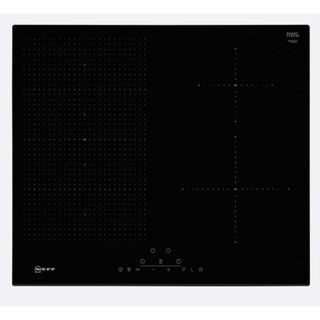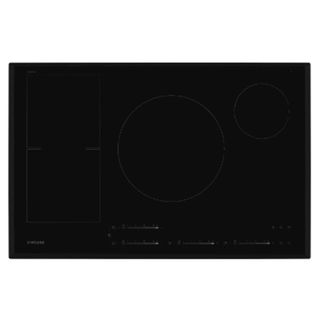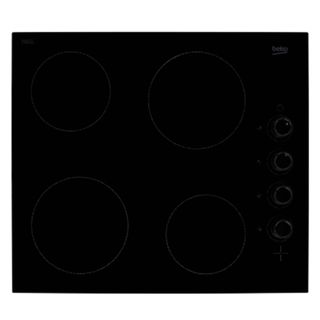Ceramic vs induction hobs: Here's the best option for your home
Weigh up the benefits of ceramic vs induction hobs with this handy guide including expert insights, pros, cons, costs and energy use comparisons
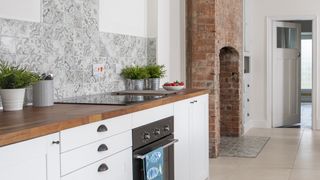
Deciding between ceramic vs induction hobs might cause a little confusion for many homeowners.
While modern units can look very similar and both use an electricity supply, the differences in how they behave, how they can be used and how much they cost is sizeable.
Finding the best equipment for your kitchen will very much affect how you interact with it. If you enjoy spending hours cooking for friends or family, choosing everything the best kitchen extractor fans to the best kitchen sink will make an impact, so it's best to do the research and get it right from the off.
Below, we break down what the benefits are for each type of hob and how you can choose between the two for your style of cooking and budget.
Ceramic vs induction hob: How do they work?
There are some key differences in how ceramic and induction hobs work, and knowing the differences will help you to choose one over the other.
"Induction hobs use an electromagnetic field to specifically heat the pan rather than the cooktop," explains Maurizio Servergnini, managing director at Bertazzoni UK. "This enables faster cooking times and maximum energy efficiency." The electrons in the pan and ingredients are agitated by the electromagnetic waves transferred through the copper wire coils within the hob.
"Ceramic hobs use radiation to begin heating cooking zones which then transfer energy on to the pan and then to the food," continues Maurizio. A circular heating element beneath each of the zones is heated using electricity and the elements then warm the glass top. "This makes the cooking process slower and less energy efficient," Maurizio concludes.
What are the benefits for each one?
While both types of hob are easy to clean, can come with changeable cooking zones for irregular pan shapes (on selected models) and be specified atop the best range cookers, there are some features which mean inductions hobs have more advantages over ceramic hobs.
The benefits of choosing an induction hob include:
- Energy efficiency
- Quicker heating time
- Safer
"With rapid start up speeds and minimal heat dispersion, induction hobs are able to boil water faster than a kettle. Induction hobs are incredibly safe and only the cooking zone area in direct contact with the pan will get a little hot from heat transfer," explains Bertazzoni's Maurizio Servergnini.
"An induction hob is a far safer option since an induction hob surface is not heated directly in the way that a ceramic hob is, and is therefore far less likely to cause burn damage if touched accidentally," adds Helena Myers, Director of The Myers Touch. "An induction hob will also switch off automatically if no cooking pan is detected, which is another great safety feature."
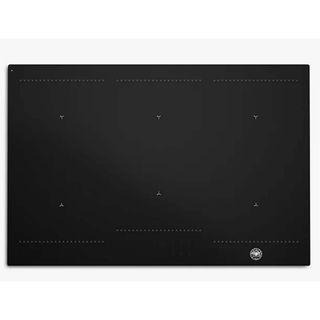
With six induction zones and 14 power levels (and boosters) on each zone, this black glass induction hob is a powerhouse for reliable and flexible cooking.
However, ceramic hobs also have their own advantages:
- Cheaper
- Any kind of cookware can be used
Unlike induction hobs, which require pots and pans with magnetised bases, ceramic hobs will heat up any type of cookware — meaning you don't have to re-stock your kitchen with new pots and pans. The set cooking zones may also work better for some cooks.
They're also cheaper than induction hobs, potentially making them the right option for those taking on a kitchen renovation on a budget.
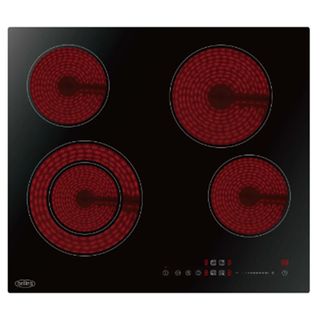
With touch controls and a residual heat indicator this ceramic hob looks stylish and practical. A double ring also allows for differently sized pans.
What are the disadvantages of induction hobs vs ceramic?
Although both hob types will cook your food, there are some significant disadvantages to both which can't be ignored.
The downsides to induction hobs are:
- Expensive to buy and repair (though this may change with the right to repair)
- New pot and pans may be required
- Surface can be scratched
If an induction hobs has won you over, before you go out to buy all new cookware, test your current pans by holding a magnet to the base of each pan. If the magnet sticks, then the pan will be ready for an induction hob.
Although good deals can be found for induction hobs, some of the mid and higher-end models are still prohibitively expensive for many, especially if you include buying new cookware.
The glass surface is also prone to scratching if pots, pans or the wrong material is dragged from one area to another.
And the disadvantages to ceramic hobs include:
- Not very efficient
- Can be very slow to heat up
- Difficult to adjust temperature once hot
- Less safe
- Surface can be scratched
"Ceramic hobs heat the full cooking zone, creating increased opportunities for heat to escape, as well as risking accidental burns," says Maurizio Servergnini, "and they only achieve approximately 70% efficiency."
Overall, the modern technology of an induction hobs means it is better prepared to cater for busy lives where the kitchen is the hub of the home. Safety settings and a cool-to-touch surface will far out-weigh any negatives for those who have kids or pets.
Meanwhile the benefits of ceramic hobs do little to combat the practical negatives of the inefficient and lasting heat that goes hand-in-hand.
Still unsure? Check out our guide to 'what is an aga?' which uses a cast iron top which cooks food gently.
Alternatively, gas ovens and hobs might be the choice for you if easy, responsive cooking is top priority.
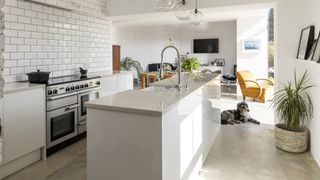
Ceramic vs induction hobs: Which is more expensive?
The question of which is more expensive a ceramic or induction hob will come down to priorities in budgeting. "Induction hobs will usually require more up-front investment than a ceramic alternative, however the former can achieve greater energy efficiencies when cooking," advises Maurizio Servergnini.
The price gap is, however, closing. A ceramic hob can cost under £100 (particularly when supplied as part of a package with an oven), but there are induction hobs out there which can cost from just £150 upwards.
If you don't want to invest right away, an induction hob won't be for you, but of you're looking for long-term savings ceramic falls flat.
Which is cheaper to run induction or ceramic hob?
Induction hobs use overall less electricity than ceramic hobs, but require more when used for the same amount of time. Maurizio Servergnini says: "Approx. 90% of energy used on induction hobs is transferred to heating the food," meaning that induction hobs are also more efficient to run than ceramic hobs.
For instance, according to Trusted Reviews, an induction hob will cost £199.29 if used every day for an hour while a ceramic hob will cost £168.63.
However, when boiling a pot of water the induction hob took about half the time (4 minutes) as a ceramic hob, costing just 3.64p compared with 5.49p.
As such, as they'll be cooking food quicker, you'll be using them for less time, saving money overall.
Find out if energy efficient appliances will save you money with our guide.
Which is better: induction or ceramic hobs?
While ultimately this decision will come down to budget, induction hobs have by far more advantages than ceramic hobs, due to their more modern technology and efficiency.
Ceramic hobs, while still perfectly functional, fall down in almost every category when compared to induction hobs but might be the only option for those not connected to gas or on a budget.
Get the Homebuilding & Renovating Newsletter
Bring your dream home to life with expert advice, how to guides and design inspiration. Sign up for our newsletter and get two free tickets to a Homebuilding & Renovating Show near you.
Assistant Editor Amy began working for Homebuilding & Renovating in 2018. She has an interest in sustainable building methods and always has her eye on the latest design ideas. Amy has interviewed countless self builders, renovators and extenders about their experiences for Homebuilding & Renovating magazine. She is currently renovating a mid-century home, together with her partner, on a DIY basis, and has recently fitted her own kitchen.
